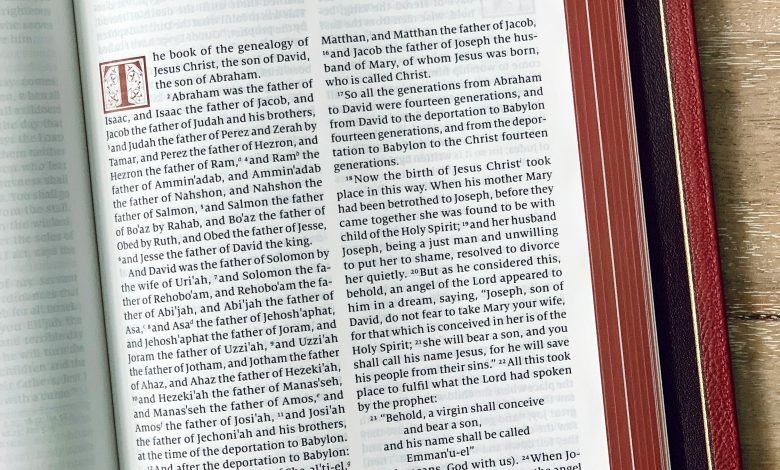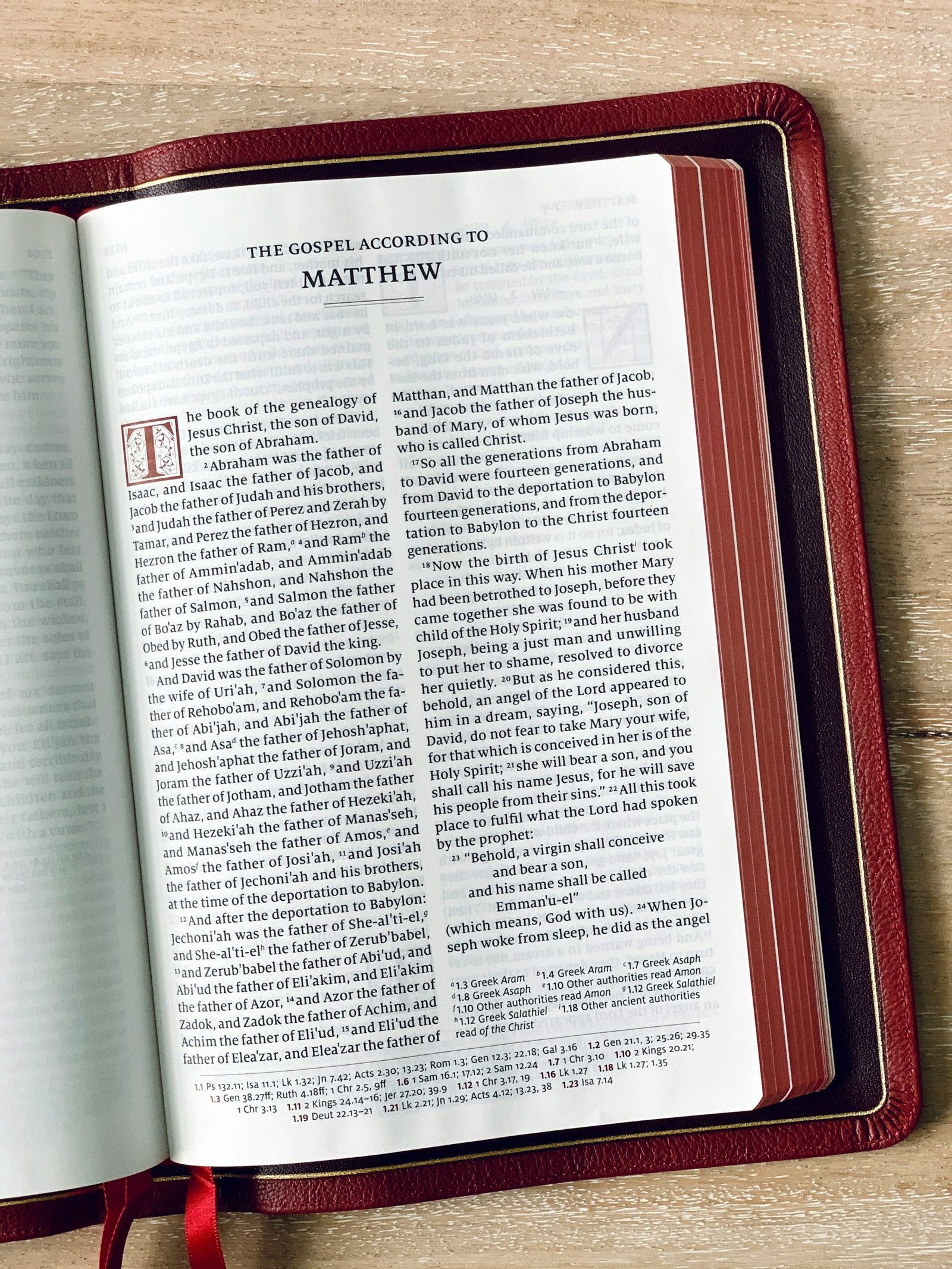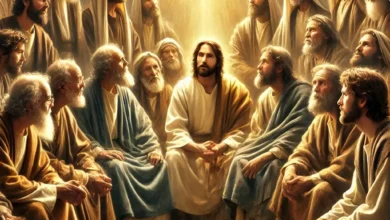
Who was Matthew in the New Testament?
Who was Matthew in the New Testament? And why did he write the Gospel of Matthew in the New Testament? The first book of the New Testament invites us to trust Jesus Christ as our Savior and obey Him as Lord. Matthew contributed to writing the New Testament so that generations, including ours, could know and believe the Good News.
Matthew’s fame in the New Testament includes the following: Before meeting Jesus Christ, Matthew worked as a tax collector. He then became an active follower and disciple of Jesus Christ. Matthew invited his “sinful” friends to meet Jesus Christ. Ultimately, he accepted the role of one of the twelve apostles.
Matthew accompanied Jesus and the apostles on extensive journeys. He was an eyewitness to Jesus’ ascension. On the day of Pentecost, he became a bold evangelist. Matthew, along with the other twelve apostles, was imprisoned. He served the Lord in Judea and other regions and wrote the pioneering gospel of Jesus Christ.
The worst betrayal: Matthew fled during Jesus’ arrest in the Garden of Gethsemane and was not a witness to Jesus’ crucifixion at Golgotha.
فرست محتوا
Matthew in the New Testament and Jesus
During His itinerant ministry, Jesus attracted large crowds to hear His teachings and sermons and to witness His miracles. Hundreds of these followers became His disciples.
From among these people, Jesus chose twelve men as His closest disciples. They were known as the twelve apostles.
These men – Peter, James, John, Andrew, Matthew, and seven others – had the extraordinary opportunity and privilege of traveling and working with Jesus.
They heard all His teachings, witnessed His miracles, and gradually discovered that Jesus was truly the Son of God, the Messiah, the Savior of the world.
From Pentecost onwards, these same men became bold and fearless witnesses of Jesus’ resurrection from the dead, His numerous appearances, and His ascension to heaven.
Filled with the Holy Spirit, they traveled throughout the known world, telling everyone about their Savior and Lord.
Three of these apostles – Matthew, John, and Peter – also contributed to the writing of the New Testament. In this way, future generations, including ours, can know and believe the Good News.
Read More : A few powerful verses from the Bible to overcome anxiety
The Gospel of Matthew in the New Testament
This first book of the New Testament invites us to trust Jesus Christ as our Savior and obey Him as Lord.
As an apostle, Matthew writes as an eyewitness to Jesus’ itinerant ministry, resurrection, and ascension. Tradition says Matthew preached the Good News of Jesus throughout the world for over 30 years until he was martyred for his faith.
Many of Matthew’s original readers may have wondered if Jesus was indeed the long-awaited King of the Jews.
In this gospel, Matthew frequently references the Old Testament writings to prove that Jesus is the Messiah, the chosen Savior.
In this book, Matthew talks about his calling and his first evangelical party:
As Jesus went on from there, He saw a man named Matthew sitting at the tax collector’s booth. “Follow me,” He told him, and Matthew got up and followed Him.
While Jesus was having dinner at Matthew’s house, many tax collectors and sinners came and ate with Him and His disciples. When the Pharisees saw this, they asked His disciples, “Why does your teacher eat with tax collectors and sinners?”
On hearing this, Jesus said, “It is not the healthy who need a doctor, but the sick. But go and learn what this means: ‘I desire mercy, not sacrifice.’ For I have not come to call the righteous, but sinners.” (Matthew 9:9-13)
Matthew’s Selection as an Apostle
These are the names of the twelve apostles: first, Simon (who is called Peter) and his brother Andrew; James son of Zebedee, and his brother John; Philip and Bartholomew; Thomas and Matthew the tax collector; James son of Alphaeus, and Thaddaeus; Simon the Zealot and Judas Iscariot, who betrayed Him. (Matthew 10:2-4)
And many more instances.
This gospel contains very famous sections, including the Christmas story (Matthew 1:18-2:23), the Beatitudes (Matthew 5:3-10), Jesus’ promise of prayer (Matthew 7:7-8), and Jesus’ invitation to rest (Matthew 11:28-30).
Other significant sections include Peter’s confession of faith (Matthew 16:13-20), Jesus’ discourse on the end times (Matthew 24:1-44), Jesus’ resurrection from the dead (Matthew 28:1-10), and the Great Commission and ascension (Matthew 28:18-20).
The Importance of the Gospel of Matthew in the New Testament
Do you enjoy going to feasts? So did Jesus! He enjoyed the opportunity to meet new people and awaken their appetite for the kingdom of God.
The gospel accounts clearly show that Jesus loved for others – friends, disciples, newcomers, and even religious leaders opposed to His ministry – to host feasts for Him.
In His preaching and teaching, Jesus spoke of the banquet in the kingdom of heaven and how great it would be for those who accept His invitation.
He also warned of how terrible it would be for those left out due to unbelief.
In the first three gospels, we learn that Jesus called Matthew to be one of His disciples. Matthew must have been shocked.
After all, Jewish teachers usually did not want to associate with tax collectors and other “notorious sinners.”
After overcoming his initial shock, Matthew immediately left his lucrative tax-collecting business and threw a big banquet that night.
This banquet was not in honor of Matthew – like a retirement party. Instead, Matthew somehow knew that Jesus wanted to meet his friends. So, he invited them all to his home.
Sure enough, the news of Matthew’s banquet reached the religious elites of that city, who condemned Jesus.
However, Jesus used their harsh criticisms as an opportunity to show His love and mercy to the “scum” of the earth.
Like Matthew, you and I have coworkers, friends, neighbors, and relatives who do not yet know God. Some may be shady characters.
Again, the Lord loves them and wants us to invite them and find a way to introduce them to the Savior.
Bible Sections About Matthew in the New Testament
If you want to read only three Bible sections about Matthew (also called Levi), take a few minutes to read Matthew 9:9-13, Mark 2:14-17, and Luke 5:27-32.
Matthew, along with the other twelve apostles, is mentioned in Matthew 10:2-4, Mark 3:16-19, and Luke 6:14-16, and once more in Acts 1:13 (though without Judas Iscariot).
The best thing is to imagine Matthew being with the other apostles throughout the gospels and Acts 1-12 and 15. He was quiet but saw and heard almost everything. Talkative Peter probably filled him in on the rest, including Matthew 17:1-13 (the Transfiguration).







